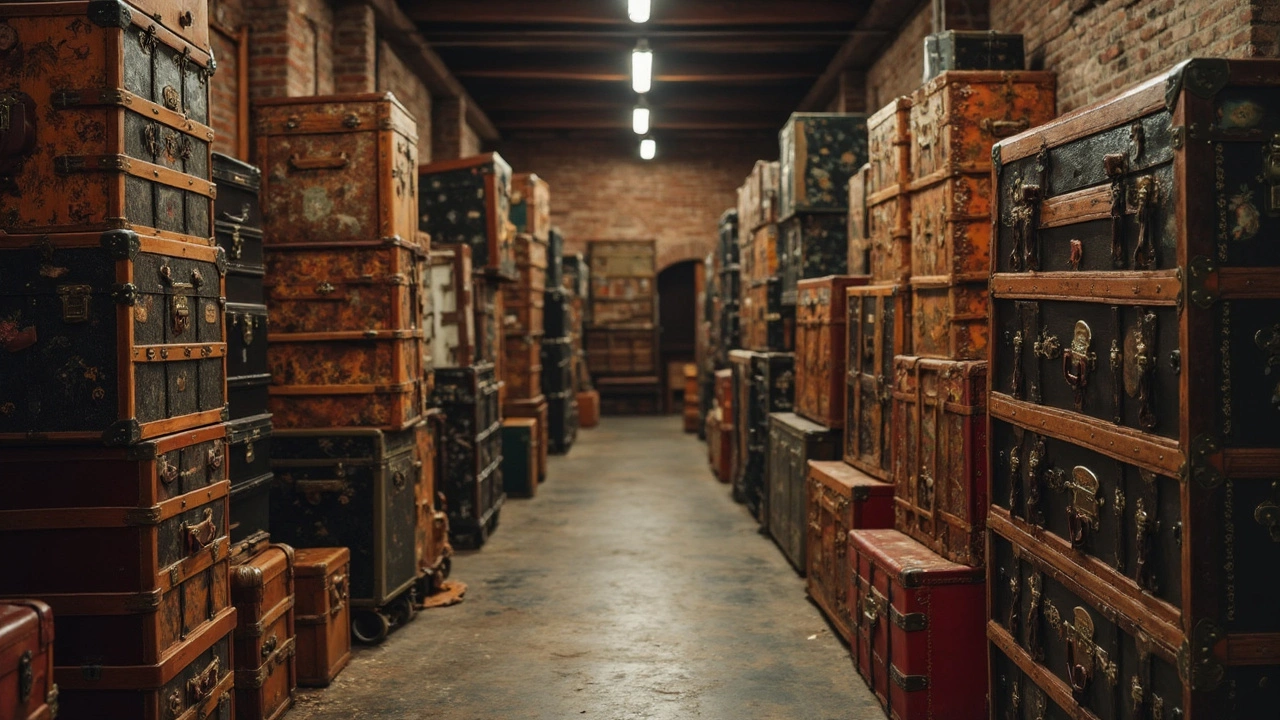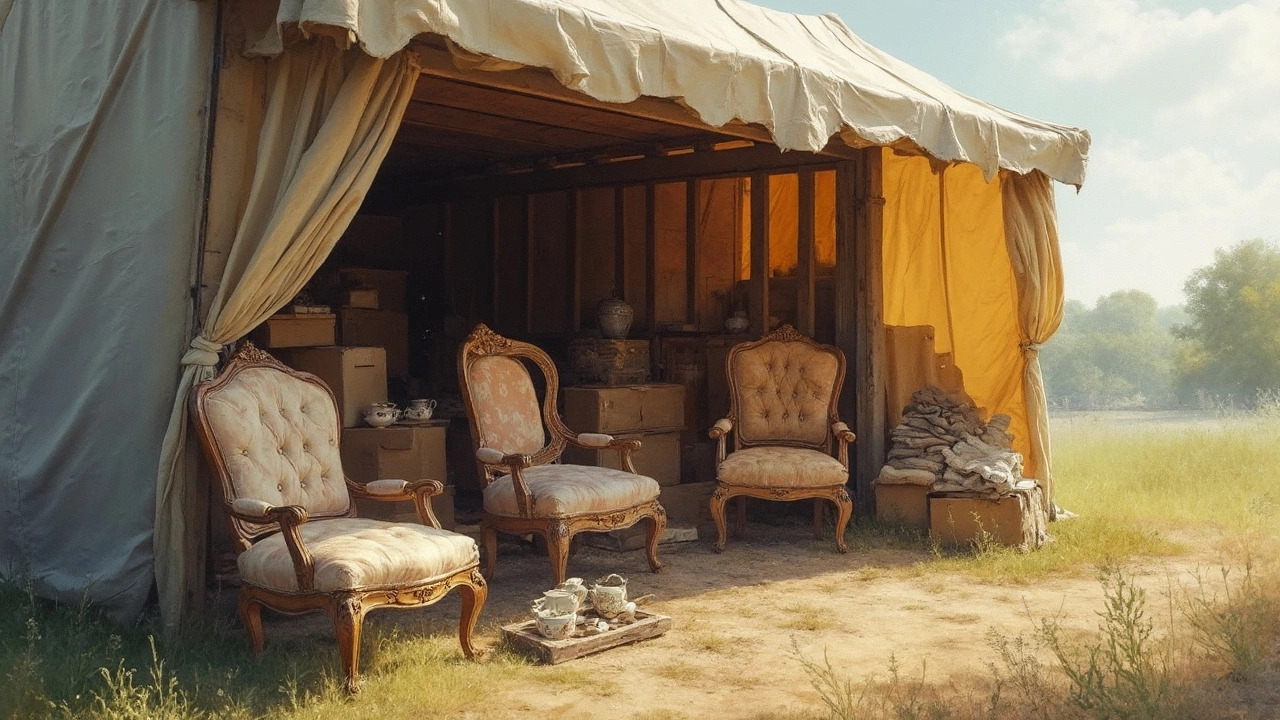Thinking about whether a tarp in your storage unit is worth the hassle? Let's get straight to the point—yes, it's generally a wise move. A tarp can be your best friend in keeping your items safe and sound. From moisture to seasonal critters, your belongings face several threats. A simple layer of tarp can help ward off these nuisances.
Why does this matter? Picture this: You pull out your stored furniture after months, only to find traces of mold or a new home for rodents. Situations like these can be avoided. Tarps can reduce moisture build-up by acting as a barrier between the ground and your stuff, keeping everything drier.
Of course, not all tarps are created equal. You've got options in thickness, material, and size. Whether canvas or polyethylene, choosing correctly affects how well your things are protected. Opt for waterproof and durable materials for the best results. Remember, planning ahead saves you from headaches later on.
- The Benefits of Using a Tarp
- How to Choose the Right Tarp
- Tips for Installing a Tarp Properly
- Common Mistakes to Avoid
- Additional Protective Measures
The Benefits of Using a Tarp
Thinking a tarp is just a basic cover? Well, it's got more uses than you might think, especially in a storage unit. Let's break down why tossing one in with your stuff is actually pretty smart.
Protection from Moisture
Moisture is a sneaky enemy. A tarp acts as a shield for your belongings, helping to keep out humidity that creeps in from the concrete floor. Ever stacked your boxes directly on the ground, only to find them damp later? A tarp under your items can help control this unwanted moisture seepage.
Defending Against Pests
No one's a fan of bugs or rodents making a home among their furniture. Tarps create a barrier that makes it harder for pests to cozy up to your stuff. "It's like having an extra lock on your unit," says Paul Stevenson, a manager at Shield Self-Storage.
Extra Armor for Dust and Dirt
Dust loves to settle on every surface, but with a tarp, your stuff can stay cleaner longer. Less dust reduces the need for cleaning once you retrieve your items, keeping fabric and woodwork looking fresh.
Organizational Aid
Using a tarp helps you contain any mess you might make while unpacking. It creates a defined area to organize and rearrange things without worrying about dirtying the storage floor.
Cost-Effective Preservation
For a few quid, you can extend the life of your stored items significantly. Investing a little in a tarp can prevent the need for costly repairs or replacements down the line. It's a small step with potentially big savings.
"A simple tarp can save hundreds by preventing potential damage." - Home Storage Weekly
How to Choose the Right Tarp
Picking the right tarp for your storage unit might seem daunting, but don't worry, it boils down to a few straightforward steps. Knowing what to look for makes all the difference in protecting your belongings effectively. Let's break it down.
Material Matters
First off, the material of your tarp is crucial. You generally want something that's both durable and waterproof. Polyethylene tarps are super practical because they're lightweight, affordable, and water-resistant. On the other hand, canvas tarps might offer better breathability, reducing the risk of mold, but they're heavier and could cost a bit more.
Consider Thickness
Next up is thickness. It affects both durability and protection levels. The thicker your tarp, the better it can handle wear and tear. Typically, tarps are measured in 'mil,' which refers to their thickness. A 5-6 mil tarp is usually adequate for indoor storage, while heavier-duty uses might require tarps that are 10 mil or thicker.
Size It Right
Getting the size right means considering both the area you need to cover and the space within your storage unit. Too large and you'll have excess material to manage, too small, and your stuff won't be well-protected. Measure your space, including height if you plan to cover stacked items, and go from there.
Pro Tip: Leave a bit of extra tarp around the edges. That way, you’ve got some wiggle room in case your setup changes.
Weather Considerations
Think about the climate where your storage is located. If you’re in a humid area, a tarp with good ventilation features can help prevent moisture buildup. In contrast, cold and dry environments might need extra insulation layers, and a thicker, more robust tarp can prove beneficial.
Special Features to Look For
- UV Protection: If your tarp will have exposure to sunlight, opt for UV-treated versions to prevent it from degrading.
- Grommets: Check for metal grommets at the corners and edges. They make securing the tarp easy and keep it in place.
- Mildew Resistance: Some tarps come with added mildew protection—handy if you’re concerned about dampness.
By keeping these points in mind, you'll select a tarp that best fits your needs and ensures your stored items stay protected, no matter what.

Tips for Installing a Tarp Properly
Getting your tarp setup right can seem straightforward, but doing it properly ensures your things are well-protected in the storage unit. A poorly installed tarp is as good as no tarp at all.
Choose the Right Size
First off, make sure your tarp covers the entire floor area where your items are stored. A tarp that's too small won't protect your stuff completely, leaving them exposed to the elements.
Secure the Edges
Once you've laid out the tarp, securing the edges is crucial. Use weights or tape to anchor it down, ensuring it doesn't move around with breeze or contact. This keeps the tarp flat and prevents trips or tear-ups.
“A tarp's effectiveness is largely about how well it's secured. Loose edges defeat its purpose altogether.” — Alex Dunn, Storage Solutions Specialist
Mind the Storage Items
When arranging furniture on the tarp, leave a small buffer space around it. Don’t let items rest directly against storage walls, as this can lead to moisture wicking up and creepy crawlies finding a shortcut.
Regular Checks
After setting it up, make it a habit to check your storage unit periodically. This ensures the tarp stays in place and everything beneath it stays dry.
Extra Tips
- Use multiple layers for added protection if you're in a damp area.
- Consider using both a tarp and a plastic sheet for persistent food odors or scent leakage issues.
Remember, it’s not just about having a tarp; it’s about smartly installing it. This small effort can spare you from larger maintenance headaches in the future.
Common Mistakes to Avoid
So, you've decided to use a tarp in your storage unit. Great choice! But hold up a second; you need to be aware of a few pitfalls if you want to make this work effectively.
Poor Tarp Quality
First up, ditch the idea of using any random tarp you have lying around. A flimsy, torn, or non-waterproof tarp won't do you any favors. The point of using a tarp is to protect your belongings from moisture and pests. If the material's compromised, it could be like having nothing at all. Opt for something durable, like a heavy-duty polyethylene tarp.
Incorrect Sizing
Another common blunder is getting the size wrong. A tarp that's too small won't cover your items properly, while one that's too large can become unwieldy and ineffective. Measure the area you plan to cover before purchasing so you pick one that fits just right.
Poor Installation
It's not just about throwing the tarp down and calling it a day. If you don't secure it well, you're leaving gaps that can let moisture seep in or pests get under. Tape the edges down or use weights to ensure that it stays put, no matter what.
Lack of Ventilation
Think a tarp can fix everything? Not quite. Neglecting the need for ventilation can lead to stale air and trapped moisture. If possible, leave some space for air circulation, and check in periodically to ensure that all is well.
Neglecting Regular Checks
Don't set it and forget it. Make it a habit to check the state of your storage unit and the tarp itself, especially during changes in weather. Keeping an eye can help you catch minor issues before they become a real problem.
A little attention to detail now can save you a headache later. Avoid these blunders to get the best out of using a tarp in your storage unit.

Additional Protective Measures
Beyond just the tarp, there are a few more steps that can really up your storage game. These tips will make sure your storage unit is not just a temporary holding space, but a safe environment for your furniture and precious belongings.
Use Shelving Units
Getting items off the ground is a game-changer. By investing in some sturdy shelving, you ensure added protection, especially from any potential ground moisture. Not only does this keep your items dry, but it also helps you stay organized. You can easily load and unload without having to rearrange everything every time.
Seal and Label Boxes
Don't underestimate the power of a good seal. Use quality packing tape to close your boxes securely. It'll minimize the risk of dust sneaking in. Also, labeling everything makes finding what you need way easier later on. It's simple but saves a whole lot of time and stress down the line.
Climate Control Options
Consider a climate-controlled storage unit if it's within your budget. These units maintain a steady temperature and humidity level, which is excellent for wooden furniture and sensitive electronics. According to surveys, items stored in this way tend to suffer less from mold and mildew.
Pest Prevention Strategies
To avoid pests, make sure food items are never stored. You might also want to place a few pest control traps or consider natural repellents like peppermint oil. These simple measures keep unwanted critters at bay.
Storage Unit Layout
How you arrange your unit can really impact accessibility and protection. Put larger, sturdier items at the back. Leave a small aisle so you can easily access items without having to reshuffle everything. This simple strategy minimizes stress on all your goods in the storage unit.


Write a comment